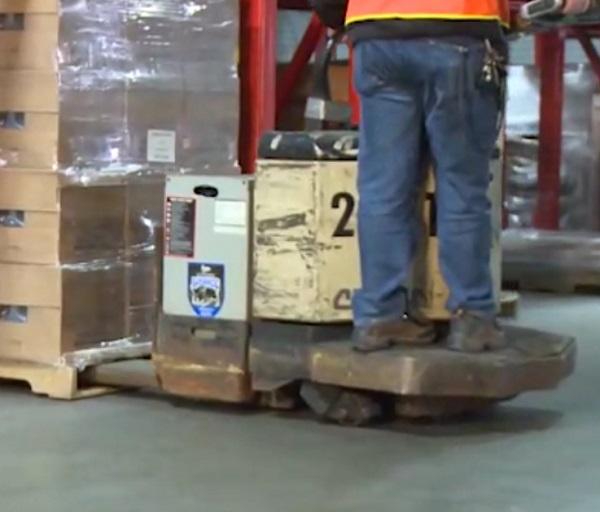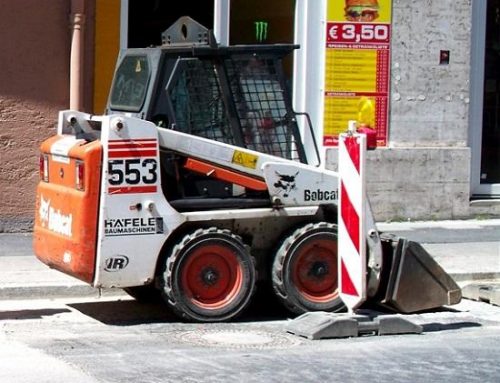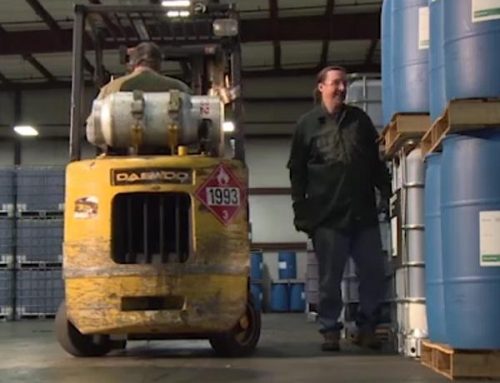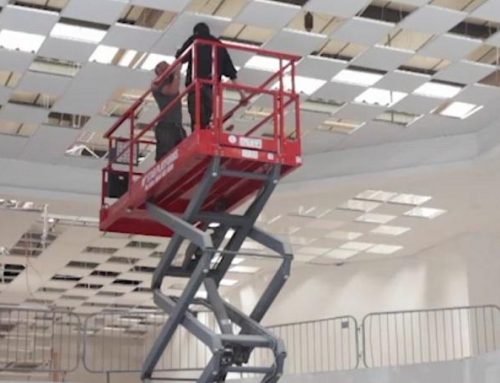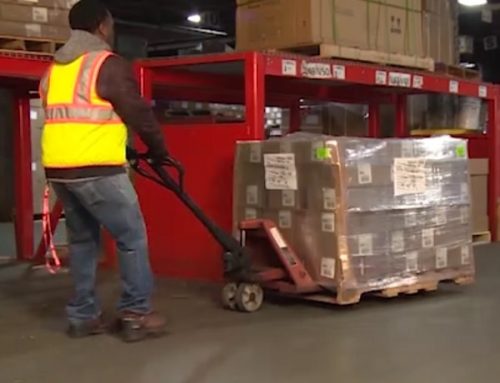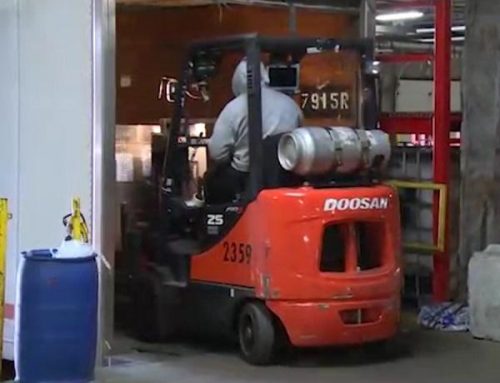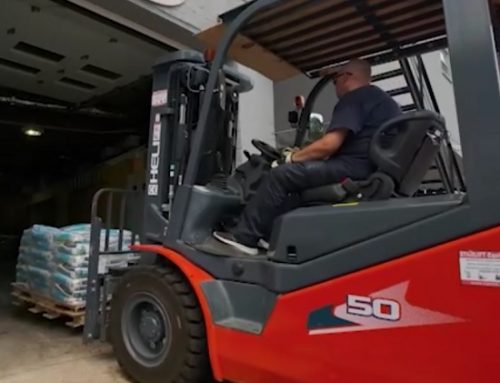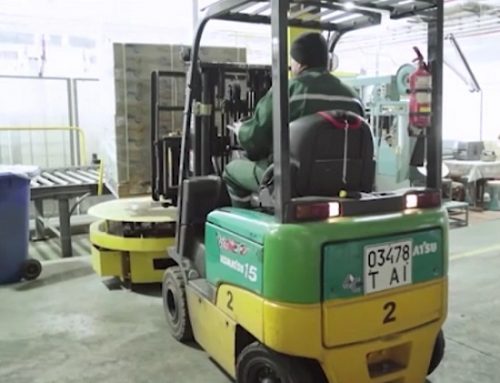When loaded pallets need to be moved around a facility, a forklift often comes to mind. But in many situations, motorized pallet trucks like walkies and walkie riders can be more efficient and effective for maneuvering pallets. These trucks are more agile and easier to handle than forklifts, yet can still move loads weighing thousands of pounds.
While not as large as forklifts, motorized pallet trucks pose many of the same hazards if not used properly. This article covers major safety guidelines for working with these trucks, based on an online training course. We’ll look at the advantages of pallet trucks, types of trucks, general safety practices, safe load handling, parking, and special procedures for docks and inclines.
Advantages of Motorized Pallet Trucks
At first glance, motorized pallet trucks may seem like the “poor cousin” of a forklift. But they offer significant advantages for moving materials in confined spaces:
- Pallet trucks can maneuver easily in tight areas where forklifts can’t fit, such as inside small trailers and narrow warehouse aisles.
- They are designed to lift loads just a few inches off the floor, improving stability.
- Pallet trucks are steered by a tiller lever connected to the rear wheels, providing excellent control.
- Controls and displays are integrated into the tiller handle, keeping them within easy reach.
In short, motorized pallet trucks combine strength to move heavy loads with agility to handle tight spaces. This makes them ideal for busy workplaces.
Types of Motorized Pallet Trucks
The two most common types of motorized pallet trucks are:
Walkies – The operator walks behind or to the side of the truck while it travels. The operator holds onto the tiller arm to control and steer the truck.
Walkie riders – These allow the operator to either walk alongside or ride on a platform. When riding, there is a support bar to hold onto.
Neither walkies nor walkie riders are meant to carry passengers other than the operator. No one should ever ride on a walkie. And only the operator should ride a walkie rider.
General Pallet Truck Safety
Even without a load, motorized pallet trucks weigh thousands of pounds. Collisions with equipment, structures, or people can cause significant damage. Here are general guidelines to follow:
- Wear steel-toed boots with slip-resistant soles as minimum PPE.
- Keep hands clean and dry to prevent losing grip on the tiller.
- Inspect trucks before use. Employers often provide checklists. Take any truck with problems out of service.
- Travel forks trailing for best steering, except when inserting forks into pallets. Face the direction of travel.
- Maintain a safe pace based on conditions. Start, stop, and turn gradually.
- Sound the horn at intersections and blind spots to alert others.
- Never engage in horseplay while operating a pallet truck.
There are also two safety devices built into the tiller to prevent the operator from being pinned:
- Deadman switch – When pressure is released, power to the truck is cut. This stops the truck if the operator loses control.
- Belly switch – Stops the truck if the operator’s midsection presses against the tiller. Prevents pinning between the truck and an object.
Safe Pallet Handling
Moving loads with pallet trucks involves three stages where safety is critical:
Lifting – Center forks in the pallet before lifting. Insert forks as far as they will go. Wheels should rest on the floor, not on the pallet. Only raise the load enough to clear the floor, keeping it stable.
Carrying – Travel with the forks trailing for best control. Watch for floor hazards like debris and spills. Allow ample clearance around the truck. Sound the horn approaching intersections.
Lowering – Position the load before lowering. Have a spotter if vision is blocked. Make sure feet and bystanders are clear of the lowering forks.
Always know the truck’s capacity from its data plate. Inspect loads before moving them. Loose, oversize or unbalanced loads can fall or make the truck unstable.
Parking Pallet Trucks
When leaving a pallet truck for any length of time:
- Park on a flat, level surface with the forks fully lowered.
- Avoid blocking exits, aisles, or emergency equipment.
- Return walkies/riders to assigned areas after extended periods like overnight.
- Leave the tiller vertical to avoid tripping hazards.
Never leave these trucks unattended with the forks raised. It only takes a moment for an unattended pallet truck to pin or strike someone walking by. Proper parking prevents accidents.
Pallet Truck Safety at Docks
Loading docks often cram lots of busy equipment and workers into tight quarters. Pallet truck operators need to stay alert and use caution in these areas. Some specific guidelines include:
- Keep back from the dock edge. Falls from docks can be fatal.
- Check that dock plates properly bridge the gap between the dock and trailers. Verify they are rated to carry the truck’s weight.
- Drive straight across dock plates at right angles to the dock. Proceed slowly. Sound the horn when entering and exiting trailers.
- Confirm trailer parking brakes are set and wheels chocked before loading. This prevents dangerous “trailer creep.”
- Watch for chocks coming loose from loading activity. Have them re-set as needed.
Operating on Ramps and Inclines
Motorized pallet trucks perform best on flat surfaces. Use extra caution on inclined surfaces like ramps to prevent trucks from becoming unstable.
Walkies – Always walk with the forks downhill when on ramps. This keeps you safely uphill from the truck if it starts rolling.
Walkie riders – With no load, drive forks downhill in reverse. With a load, drive forks uphill in reverse. Either way, travel straight up or down the center of the ramp.
Conclusion
While motorized pallet trucks pose serious hazards including pinning and collision risks, proper training and adhering to safe work practices greatly reduce the dangers. Follow the guidelines provided here, based on an online training course, to perform your materials handling work safely and productively.
The detailed exploration of safe practices for operating motorized pallet trucks in this article is an invaluable resource for anyone working with these types of equipment. It thoroughly addresses the advantages of using motorized pallet trucks, the different types available, general safety practices, and specific guidelines for safe load handling, parking, and operating in challenging environments like docks and inclines. While this article provides an extensive understanding of the subject, putting this knowledge into practice in real-world scenarios is crucial. This is where our specialized online training course comes into play, offering an interactive and comprehensive learning experience that ensures operators not only understand but can also apply these safety practices effectively.
Are you ready to redefine safety in your workplace with state-of-the-art training that goes beyond traditional methods? Welcome to Our “Motorized Pallet Truck Safety” training, a comprehensive solution for ensuring safe and efficient operation of pallet trucks in your workplace.
Transformative Learning for a Safer Workplace
Pallet trucks, crucial in the smooth operation of many businesses, pose significant safety challenges. Our cutting-edge training courses are meticulously designed to address these challenges head-on. With options ranging from engaging micro-learning modules to in-depth full-length online courses, we cater to diverse learning preferences and time constraints.
Engaging and Interactive Training Experience
Our training isn’t just informative; it’s immersive. The topics, including “Walkies and Walkie Riders,” “Safe Truck Operation,” and “Working on Loading Docks and Inclines,” are not just subjects but gateways to interactive learning experiences. Your employees will not just learn; they will engage, interact, and apply, leading to a deeper understanding and better retention of safety practices.
Customized Learning for Diverse Needs
Understanding that each workplace is unique, our courses offer flexibility. Whether it’s the concise yet powerful micro-learning courses for quick refreshers or the comprehensive full-length online courses for a thorough understanding, we have you covered. This flexibility ensures that your team gets exactly what they need, tailored to their schedules and learning styles.
Commitment to Excellence
At Our, we are committed to delivering top-tier educational experiences. Our courses are SCORM 1.2 compliant, ensuring they meet high standards of compatibility and quality. Plus, with offerings in both English and Spanish, we are dedicated to accessibility and inclusivity.
Seize the Opportunity for a Safer Tomorrow
Investing in Our “Motorized Pallet Truck Safety” training is more than a compliance measure; it’s a commitment to the safety and well-being of your workforce. It’s a step towards creating a culture of safety that resonates throughout your organization.
Don’t wait for safety to become a concern. Take proactive steps today with Our innovative training solutions.
Click on the link below for a free demo:


